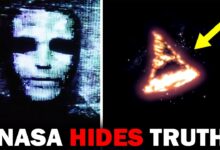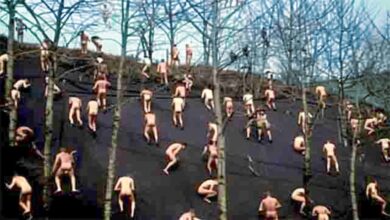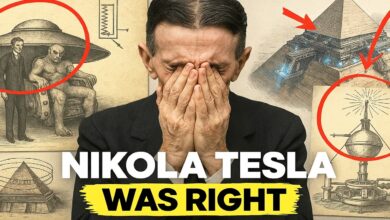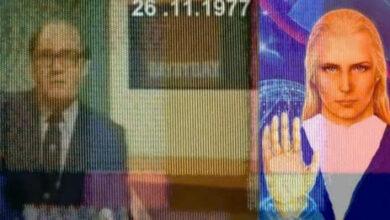Jimmy Hoffa Mystery Finally Solved And It’s Not Good
The disappearance of Jimmy Hoffa on July 30, 1975, remains one of the most famous unsolved mysteries in the United States. Hoffa, a powerful labor leader and former president of the Teamsters Union, vanished from the parking lot of the Machus Red Fox restaurant in suburban Detroit. Despite Hoffa being one of the most prominent figures in America at the time, his body has never been found, and no one has been able to clearly explain what happened to him.
On that day, Hoffa had arranged a meeting with two individuals, Anthony “Tony Jack” Jackalone, a Detroit gangster, and Anthony “Tony Pro” Provenzano, a Teamsters union official with ties to the mafia. After Hoffa failed to return home that evening, his wife, Josephine, grew concerned as this was unusual for him. Hoffa’s car was found at the restaurant, but Hoffa was nowhere to be found. Despite a large-scale FBI investigation, no clear leads emerged, and numerous suspects, including gangsters and even Hoffa’s adopted son, Charles “Chucky” O’Brien, were implicated.
Hoffa’s influence and his controversial ties to organized crime only heightened the curiosity surrounding the case. His leadership of the Teamsters, which had close connections to the mafia and powerful pension funds, made him a target of enemies both in the criminal world and in politics. Although Hoffa had been imprisoned for jury tampering and fraud, he was pardoned in 1971. After his release, Hoffa attempted to regain control of the Teamsters, which put him in direct conflict with mafia figures who benefited from his absence.
Theories about Hoffa’s fate have varied widely and dramatically. Some believe he was murdered to prevent his return to power, with his body disposed of at a funeral home or waste processing facility. The famous “Giant Stadium” theory posits that he was buried in the concrete foundation of the stadium during its construction, though the FBI later dismissed this. Others speculate that Hoffa’s body might have been hidden in remote places like the Florida Everglades or at the bottom of a large lake.
Despite these theories, no physical evidence has been found to definitively solve the case. However, in 2022, a promising lead emerged when investigators searched the PJP landfill in Jersey City, New Jersey, based on the confession of Frank Capola, the son of one of the landfill’s owners. Capola claimed that Hoffa’s body had been buried there in a metal drum shortly after his disappearance. This theory was bolstered by testimony from former mafia associates and forensic analysis, suggesting that this location might hold the key to solving the case.
The mystery surrounding Hoffa’s disappearance continues to captivate the public, influencing everything from pop culture to law enforcement investigations. As new evidence and theories emerge, the question remains: will we ever know the truth behind one of America’s most famous disappearances?
Hoffa’s disappearance remains one of the most enduring and unresolved mysteries in American history. Despite years of investigations and the deaths of key figures involved, the case still attracts public attention, fueled by theories, confessions, and breakthroughs in the investigation. What began as a typical investigation into the disappearance of a powerful union leader has evolved into a complex puzzle involving organized crime, political power, and a shifting network of ever-changing testimonies.
Recent advances in forensic technology, particularly the use of ground-penetrating radar and chemical analysis, have provided new insights into potential burial sites, including investigations in Michigan and Florida. These efforts, coupled with testimony from mafia veterans and Teamsters associates, have renewed hope in solving the case. However, the reliability of these confessions is often clouded by personal motives, the passage of time, and contradictory details, making the search for the truth difficult.
One of the most controversial elements in the investigation is the confession of Frank “The Irishman” Sheeran, a former hitman for the Buffalino crime family, who claimed to have killed Hoffa. His story, recounted in the book I Heard You Paint Houses and popularized in the film The Irishman, presents a narrative that contradicts other theories, including Hoffa being disposed of at the New Jersey landfill or buried in Michigan. While Sheeran’s confession has been dismissed by some as self-serving fiction, others believe it may contain elements of truth, particularly regarding Hoffa’s complex relationship with organized crime.
Meanwhile, the search for Hoffa’s body continues to take investigators to various locations based on tips from mafia members and associates, including a horse farm in Michigan and a construction site in Detroit. Each excavation, although it has not found the body, has helped narrow down the list of possible sites, eliminating some theories and clarifying the scope of the investigation.
A recent development in recent years has been the emergence of deathbed confessions from individuals with information about events related to Hoffa’s disappearance. These revelations, often coming from those who had previously remained silent, have added a new layer to the investigation. Some claim to have witnessed Hoffa’s body being transported to a processing plant, while others suggest he was buried under a construction site in Michigan or New Jersey.
Despite the contradictions in these stories, they all share one common thread: the fear of retribution that once kept organized crime secrets now seems to be fading, as key figures from the 1970s pass away. This shift has allowed investigators to approach the case with a renewed sense of urgency, as they seek to piece together the final chapter of Hoffa’s life.
Ultimately, the search for Jimmy Hoffa’s body is not only a quest for closure for his family but also a reflection of the intersection of organized crime, labor unions, and political power in post-World War II America. Hoffa’s disappearance represents a dramatic showdown between legitimate power structures and the violent, mysterious world of organized crime, a time in American history when the boundaries between the two worlds were often blurred.
As the investigation continues, there remains strong public interest in resolving the case—not just to provide answers for Hoffa’s family, but also to shed light on a bygone era, when powerful figures could manipulate both unions and political systems with deadly consequences. In many ways, Hoffa’s disappearance is emblematic of the complex, often murky undercurrents that shaped American society in the 20th century. Though decades have passed, the case remains open, a symbol of the ongoing search for truth in the face of deep-seated corruption and power.








